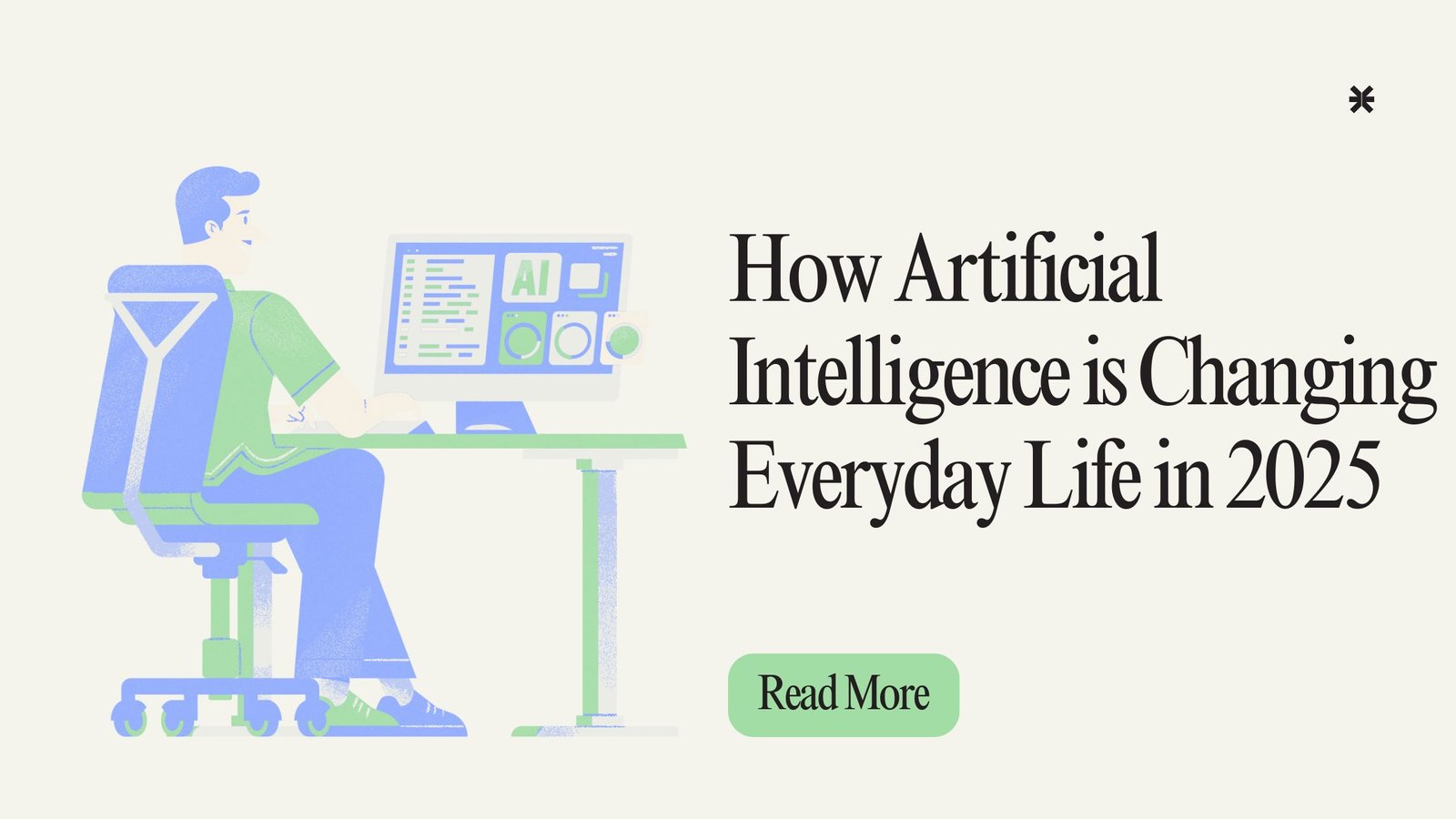Introduction: The Invisible Revolution Around Us
Artificial Intelligence (AI) isn’t science fiction anymore — it’s the silent force behind how we live, work, and connect. In 2025, AI is no longer just a buzzword from Silicon Valley; it’s an invisible companion making our homes smarter, our cities safer, and our decisions sharper.
From your voice assistant reminding you to drink water to self-driving cars that reduce road accidents — AI has moved from being “helpful” to being essential. Let’s explore how Artificial Intelligence is reshaping everyday life in 2025.
Smarter Homes: The Rise of Personal AI Companions
Remember when smart homes were a luxury? In 2025, they’re practically mainstream. Devices like Alexa, Google Home, and Apple’s Siri have evolved into full-fledged AI companions that learn your habits and routines.
AI-powered thermostats adjust your home’s temperature before you even step in. Smart refrigerators track groceries and suggest recipes. Even lighting systems can automatically sync with your mood, adjusting brightness and color for relaxation or focus.
This shift isn’t just about convenience — it’s about personalization. AI learns from your behavior to make your environment respond to you rather than the other way around.
AI at Work: Boosting Productivity and Creativity
Gone are the days when AI was feared for “taking jobs.” In 2025, it’s creating smarter workplaces instead. Tools powered by AI help professionals work faster, reduce human error, and focus on creative problem-solving rather than repetitive tasks.
-
AI assistants summarize meetings, schedule calls, and even draft emails.
-
Predictive analytics helps businesses forecast market trends and customer needs.
-
AI in HR ensures fairer hiring by analyzing skills objectively and reducing bias.
In creative fields, AI isn’t replacing imagination — it’s enhancing it. Writers use AI tools to brainstorm ideas, designers rely on AI for inspiration, and marketers use AI to personalize customer experiences.
The result? A work-life that’s more efficient, balanced, and human-centered.
Healthcare Reinvented: From Diagnosis to Prevention
If there’s one area where AI’s impact feels life-changing, it’s healthcare. In 2025, AI doesn’t just assist doctors — it empowers patients.
Wearable health monitors track your heart rate, sleep cycles, and stress levels in real time. AI-driven diagnostics analyze medical scans with incredible precision, detecting early signs of diseases like cancer or diabetes faster than ever.
AI-powered chatbots also serve as virtual health assistants, providing 24/7 support and reducing the burden on hospitals. Personalized treatment plans, generated using patient data, are making healthcare more accessible and affordable worldwide.
In short, AI is helping humans live longer, healthier lives — one algorithm at a time.
AI in Education: Personalized Learning for All
Education in 2025 looks very different from a decade ago. AI has made learning smarter, adaptive, and inclusive.
Students no longer follow a one-size-fits-all curriculum. Instead, AI-driven platforms personalize lessons based on each learner’s pace, strengths, and interests. Struggling in math? Your AI tutor adjusts lessons and gives you extra exercises. Excelling in history? It offers deeper content to keep you challenged.
Teachers also benefit from AI analytics that track classroom performance and suggest better teaching methods. Meanwhile, virtual classrooms powered by AI have made quality education accessible even in remote parts of the world.
AI is turning education into a truly global, lifelong experience.
Smarter Cities and Transportation
Urban life has become faster and more sustainable thanks to AI. In 2025, smart cities use AI to manage traffic, reduce pollution, and optimize energy consumption.
Self-driving vehicles have become a common sight in many major cities. They rely on AI to predict road conditions, navigate efficiently, and drastically cut down on accidents. AI-driven traffic management systems analyze real-time data to prevent congestion and improve public transportation routes.
The result is not only smoother commuting but also a greener planet. AI helps cities make decisions that balance human convenience with environmental sustainability.
Entertainment: AI as Your Creative Partner
From movies to music, AI is revolutionizing how we entertain ourselves. Streaming platforms use AI to recommend what to watch next with uncanny accuracy. Musicians are using AI tools to compose melodies and even remix old classics into new genres.
In gaming, AI-driven storylines and NPCs (non-playable characters) react intelligently to players’ choices, making every playthrough unique. Even social media content creation is evolving — AI helps influencers edit videos, write captions, and analyze engagement trends.
In 2025, entertainment isn’t just consumed — it’s co-created with AI.
Ethical AI: Balancing Innovation and Responsibility
As AI becomes deeply woven into daily life, ethics and privacy are front and center. In 2025, governments and tech companies are implementing stricter policies to ensure transparency and data protection.
AI must be fair, unbiased, and explainable. Initiatives like “ethical AI” frameworks ensure that algorithms don’t discriminate or misuse personal information. Users are becoming more aware of how their data is used, and companies that respect privacy earn greater trust.
The challenge isn’t stopping AI — it’s steering it responsibly toward a better future.
Conclusion: Living with AI, Not Under It
Artificial Intelligence has quietly become the heartbeat of modern life in 2025. From the way we communicate to how we learn, work, and heal — AI is transforming every corner of our existence.
Yet, the most powerful change isn’t technological — it’s human. We are learning to collaborate with machines in ways that amplify creativity, empathy, and understanding.
AI isn’t replacing us; it’s reminding us what makes us human.
A galvanometer is an instrument used to detect and measure small electric currents by converting electrical energy into mechanical movement. It’s a key component in many electrical and physics experiments, helping to indicate current direction and magnitude with high precision.
👉 Learn more in our detailed guide: What is Galvanometer







